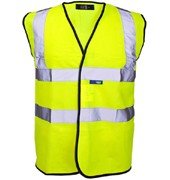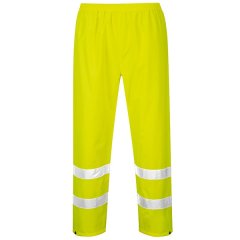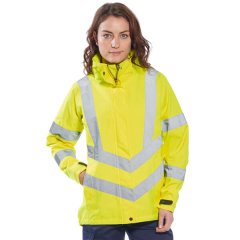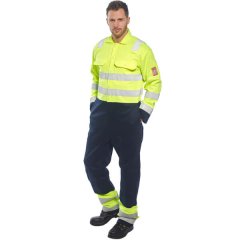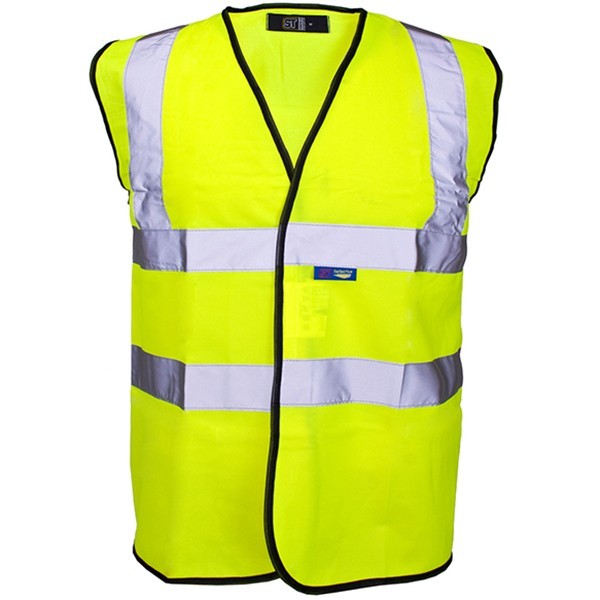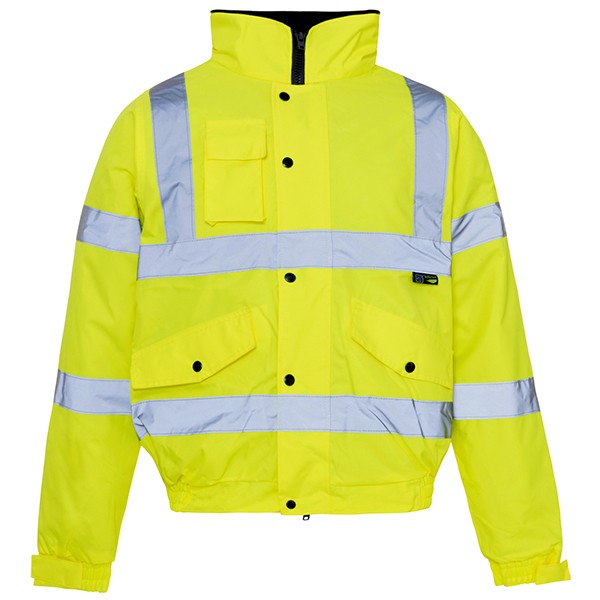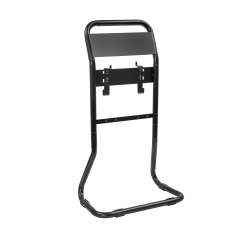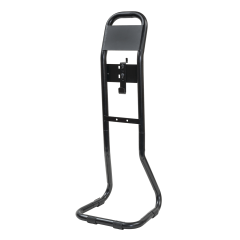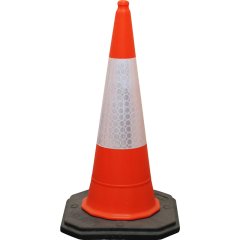Hi-Vis Workwear
Hi-Vis Workwear
Hi-Vis Workwear
Workwear is designed to keep the wearer safe, regardless of the environment and the tasks they’re carrying out. This ranges from waterproof workwear to keep workers warm and dry even in the dark depths of winter, and high visibility clothing to ensure the wearer is always seen and reduce the risks of an unfortunate accident.
High-Visibility
Being struck by a vehicle is the second most common cause of death in the workplace, which shows how vital high-visibility garments are in the workplace.
To be effective, Hi-Vis clothing needs to be of a colour which allows the wearer to stand out against the ambient background found in working environments. In practice, the best colours are day-glo or fluorescent yellow.
It should also incorporate reflective material so that they are seen in headlights in poor lighting conditions and in darkness, creating a bright image which motorist are more likely to see from a distance. As a result, they have more time to react to prevent an incident.
Ultimately, high visibility clothing will protect the wearer in the day, at night, and in adverse weather.
Such clothing must comply with EN471:2003/EN20471:2013, and must then be maintained and worn properly in order to provide suitable protection.
Garments are classified to demonstrate the level of protection they provide based on the conspicuity provided. These dictate the minimum quantities of background and reflective materials to be used.
Class 1 is the lowest where enhanced visibility is an advantage, but for minimal risk, and for off-road purposes. For example, these are likely to be all that is required when needing to simply stand out from a crowd at an event.
Class 2 gives intermediate protection levels, and Class 3 gives the highest level of protection. These are far more suitable and are required where hazards are likely to exist, such as when on construction sites, the railways, and the highways.
Jackets and vests are the most common type of high visibility workwear, but reflective trousers give added protection to individuals. These are ideal for when it is likely that people will be carrying objects which can cause obstructions and potentially hinder them from being seen whilst carrying out their tasks.
Other Workwear Features
High visibility warning clothing is just one type of safety workwear, but there are other features to consider; whether you want these for general workwear or integrated into hi-vis garments.
EN343 gives protection against rain, giving waterproofness and breathability in three classes of effectiveness. EN342 gives protection against the cold in temperatures less than 5°C. Additionally, check that it carries the CE mark to denote it meets European standards.
It is just as important for workwear to be suitable for the person wearing it, and the work they’re likely to be carrying out whilst wearing them.
For people working in warehouses, loose-fitting clothing may get caught on machinery, while big coats are going to be inappropriate to wear during the summer months when waistcoats will be far more receptive.
It also needs to be comfortable and fit the wearer properly, not restricting the movement of the wearer.
When it’s necessary for workers to wear additional personal protective equipment (PPE), then they should not interfere with each other. That may be other workwear that has to be worn for wet or cold conditions, or for personal safety such as breathing apparatus, gloves, or footwear.
Musts for Employees and Employers
Any high visibility workwear needed for the job must be provided free of charge to any employees who may be exposed to significant risks to their safety. Employers need to also maintain and check workwear and provide storage when not in use.
It’s also important that employees are informed, instructed and trained in how to wear hi-vis clothing correctly, explaining why the workwear is needed, and supervising that is worn properly.
On the other hand, employees should wear clothing provided as instructed, look after the clothing they’re issued, and report any defects or issues to the appropriate person.
Damaged, ill-fitting, or unworn clothing will not provide the protection against the hazards.
Please Note: Due to manufacturer's updates, changes in standards and availability, products may vary from the images shown.


